The biodegradable packaging market is estimated to be valued at USD 111.55 Bn in 2024 and is expected to reach USD 167.52 Bn by 2031, growing at a compound annual growth rate (CAGR) of 6% from 2024 to 2031.
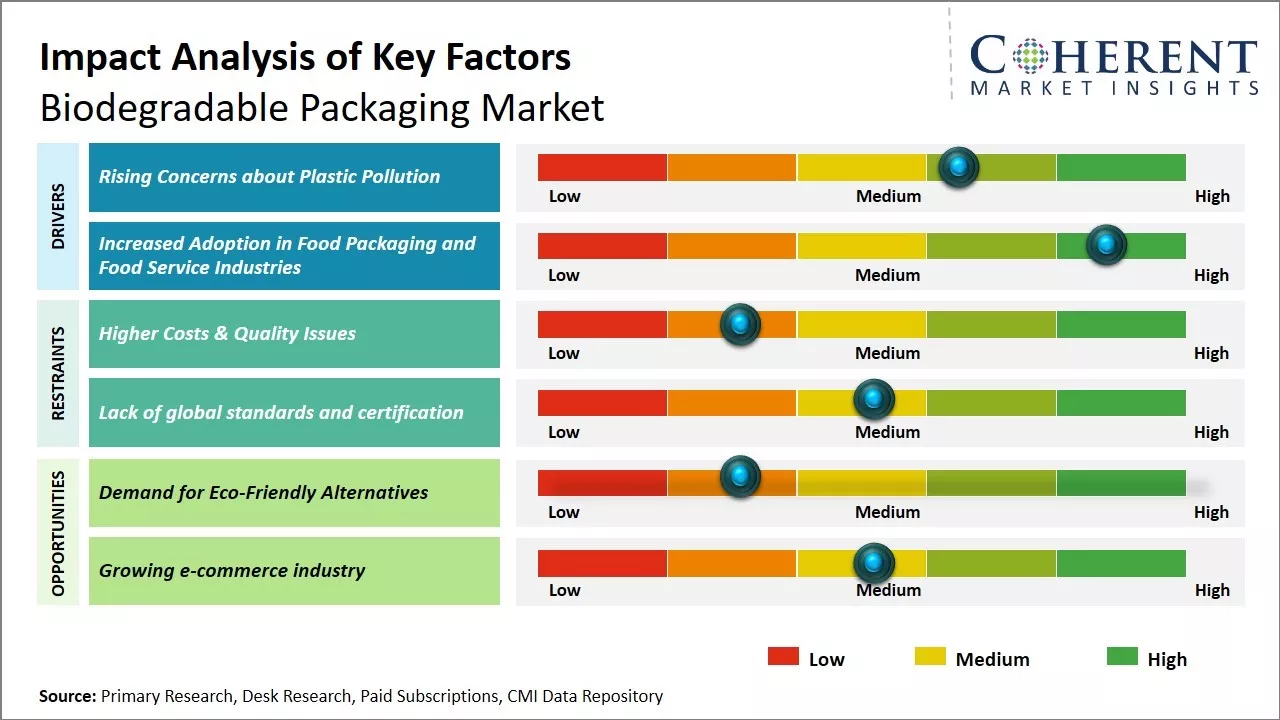
To learn more about this report, request a free sample copy
The market trend in biodegradable packaging is positive driven by rising environmental concerns and regulations against single-use plastics. There is growing consumer demand for eco-friendly packaging which has encouraged brands and retailers to shift towards sustainable materials. Governments across regions have implemented bans or taxes on plastic packaging to reduce waste. Manufacturers are continuously innovating and developing new biodegradable alternatives made from plant-based sources like paper, starch, and cellulose. Increased R&D investment is expected to make biodegradable options more affordable and accessible to the mass market.
Rising Concerns about Plastic Pollution
With growing awareness about the negative impact of plastics on the environment, there is increasing concern among citizens and governments worldwide about plastic pollution. The growing plastic pollution is expected to drive the market growth. For instance, according to data published by the UN Environment Programme in 2023, every year 19-23 million tons of plastic waste leaks into aquatic ecosystems, polluting lakes, rivers, and seas. Tons of plastic end up in landfills or streams and make their way to oceans each year. Various studies have highlighted how plastics have contaminated water bodies and are negatively impacting wildlife as well. Animals like fish, birds, and turtles often mistake plastic for food which leads to their death. Images of whales and fish with stomach full of plastic have brought global attention to this issue. The concerns are further aggravated by the fact that most conventional plastics are not biodegradable and can persist in the environment for hundreds of years. They continue breaking down into micro plastics but never fully decompose. This means the plastic pollution problem will continue worsening for generations to come unless urgent action is taken. Many countries and local governments have now imposed bans on single-use plastic items like straws, cutlery and grocery bags. Major recycling and waste management initiatives are also being implemented with a target to boost plastic recycling and ensure plastic waste is properly disposed and does not end up in the environment.
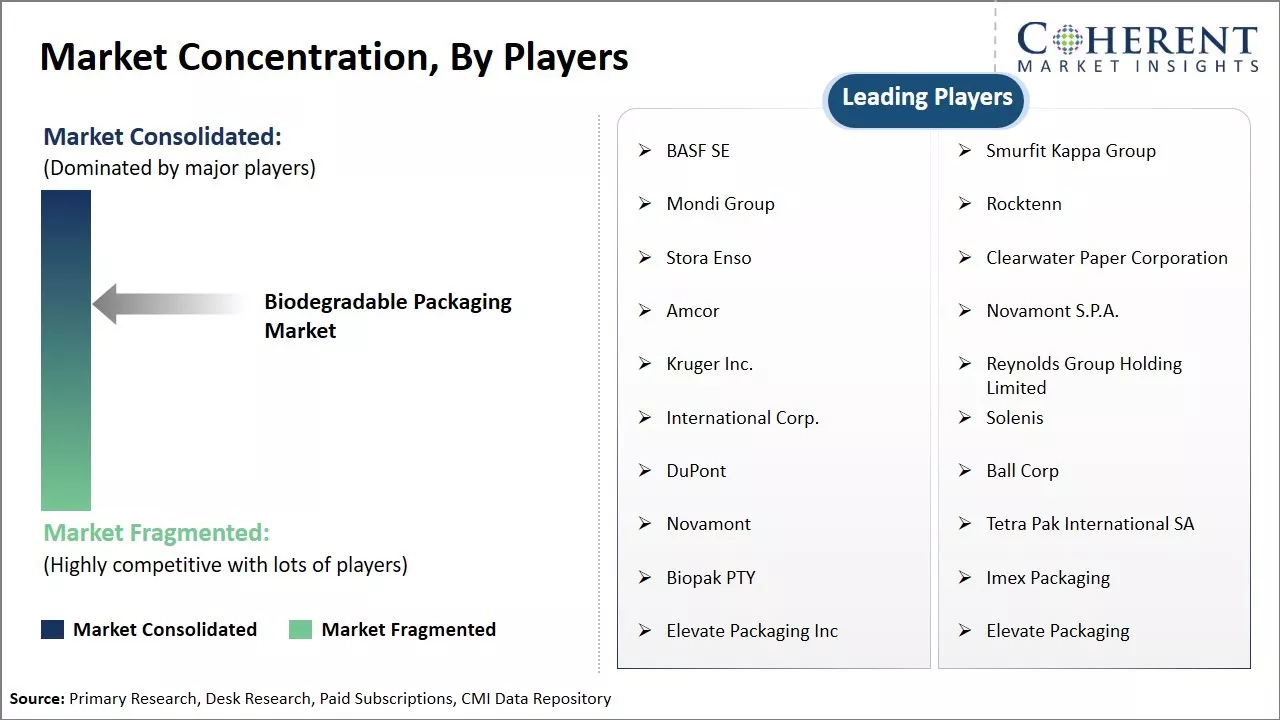
To learn more about this report, request a free sample copy
Increased Adoption in Food Packaging and Food Service IndustriesThe food processing and food service industries extensively utilize various forms of plastic and plastic-based packaging materials like bottles, containers, lids, straws, cutlery, and wrappers for their diverse product range. However, conventional plastic packaging poses serious waste management issues as most of it is not recyclable and ends up in landfills. There is also growing unease about toxic chemicals from plastic food packaging leaching into food and beverages which can pose health risks on consumption.
To learn more about this report, request a free sample copy 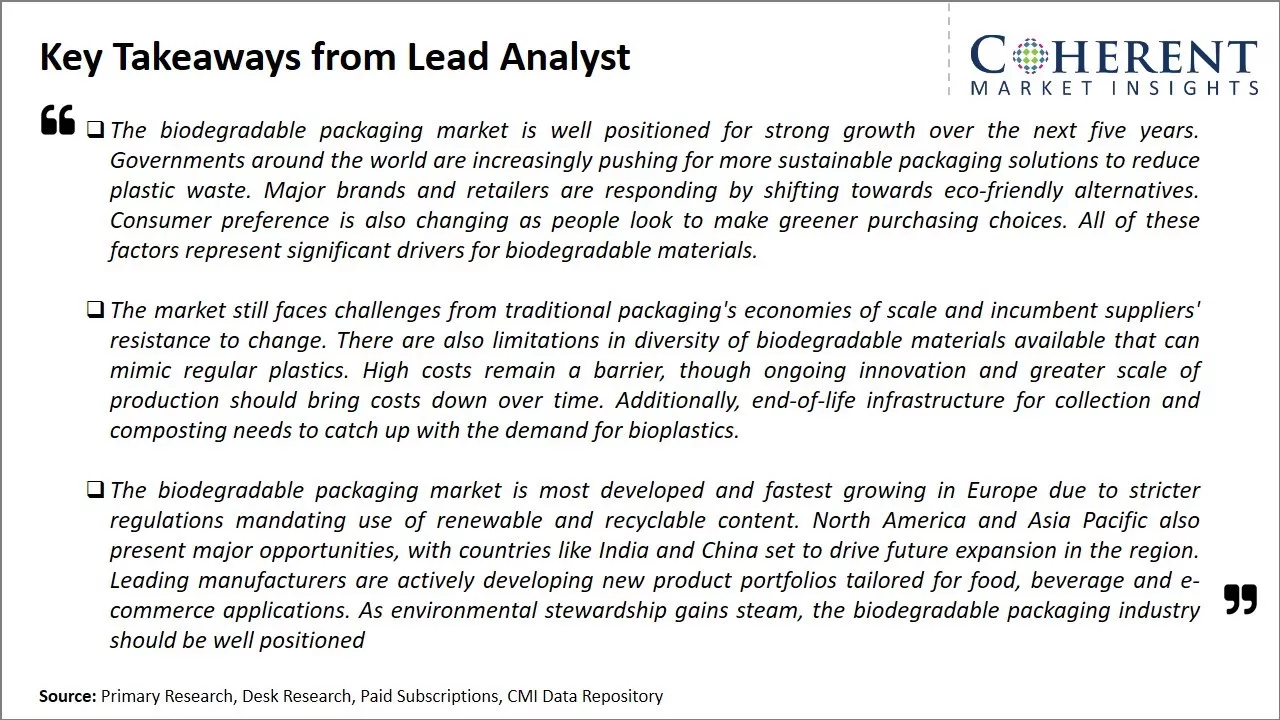
The biodegradable packaging market faces several challenges. Since these products are not as durable as traditional plastics, there is a perception that they are not as effective in protecting products during transport and storage. They also tend to be more expensive to produce than regular plastic packaging. Consumers are not always willing to pay higher costs for biodegradable options. Additionally, the necessary infrastructure for industrial composting of these packages is still developing in many parts of the world. The technologies involved in producing biologically-sourced packaging materials also need to achieve greater scale and lower costs.
Market Opportunities: Demand for Eco-Friendly Alternatives
Growing consumer awareness about sustainability issues and demand for eco-friendly alternatives is driving market growth. Regulations banning certain single-use plastic items are also creating a need for renewable substitutes. As production capabilities improve, costs should decrease over time.
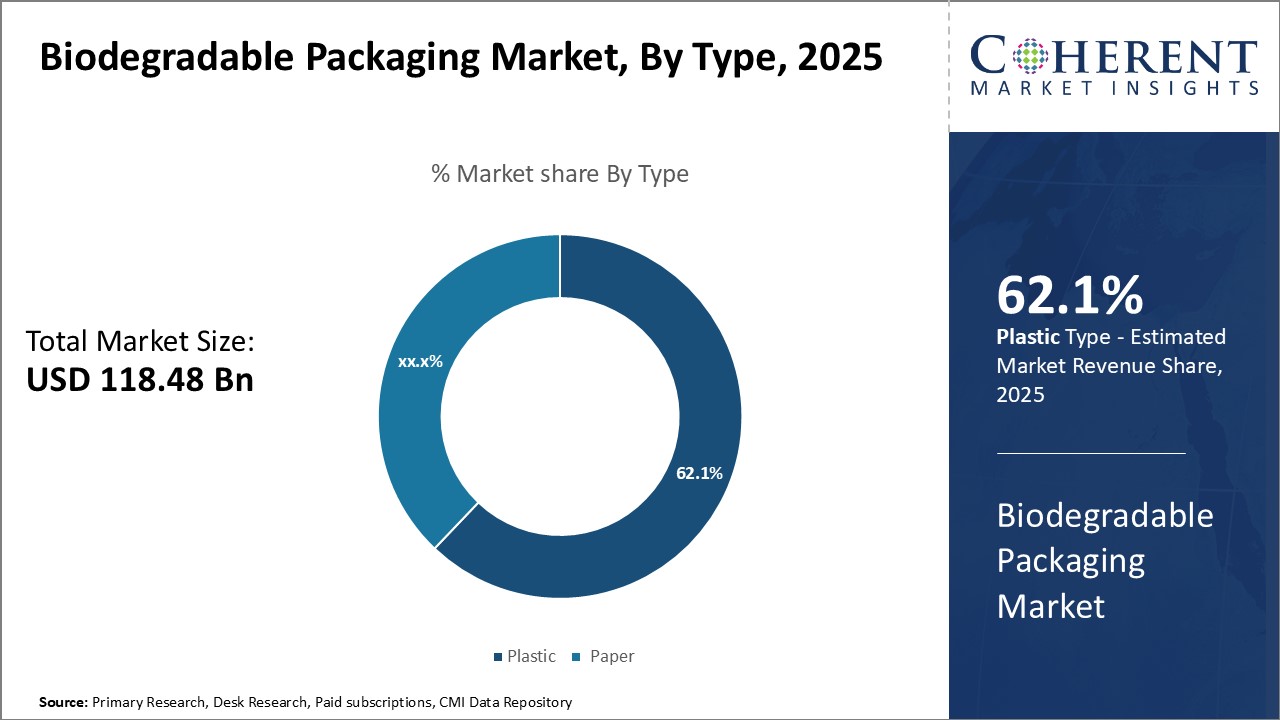
To learn more about this report, request a free sample copy
Insights, By Product Type: In terms of product type, paper contributes the highest share of the market owing to its sustainability and recyclability
Paper contributes 61.6% share of the market owing to its sustainability and recyclability. Paper has long been one of the most commonly used materials for packaging due to its natural properties. Being a plant-based material derived from renewable wood or agricultural sources, paper is one of the most sustainable packaging options. It requires less energy to produce than plastic and can be recycled easily without losing quality. In fact, paper has one of the highest recycling rates of any packaging material. Paper properties such as flexibility, printability, and familiarity make it popular for a variety of packaging applications. It is widely used for primary and secondary packaging of food, household goods, personal care items, and more. Having a natural image, paper promotes recyclability and environmental credibility which resonates well with consumers. Brands are increasingly emphasizing the use of sustainably sourced and recycled paper to strengthen their sustainability credentials. One key driver of the rise in paper packaging is concerns regarding single-use plastics. Plastic pollution in oceans and waterways has emerged as a pressing environmental issue. This has boosted demand for plant-based and recyclable alternatives like paper and paperboard. Paper mills are developing innovative material science to expand application areas and functionalities previously dominated by plastic. New product constructions like molded pulp allow paper to mimic plastic thermoform trays and clamshells.
Insights, by end-use industries: Food contributes the highest share of the biodegradable packaging market owing to higher volumes of packaging needed and regulatory tailwinds
Among the various end-use industries, food contributes 41.6% share of the biodegradable packaging market owing to higher volumes of packaging needed and regulatory tailwinds. With the global population approaching 8 billion, the worldwide food demand has seen a consistent rise over the past few decades. Higher incomes have also resulted in diversifying diets, preference for convenience foods, and more spending on food away from home. All these societal shifts have created exponential growth in the overall volume of food packaging required globally each year. At the same time, regulatory bodies worldwide are implementing stricter rules to curb plastics pollution and promote sustainable packaging options. Several jurisdictions now ban or tax certain types of single-use plastics commonly found in food service and packaging. They also mandate minimum recycled content levels or offer incentives for using recyclable/compostable materials. Since food comes under an essential category, producers have to consistently comply with changing norms to remain compliant. Biodegradable materials such as paper, bagasse and wood fulfill dual objectives of sustainability and regulatory adherence for food packaging applications. They provide ideal barrier and print properties for various formats including cartons, bags, trays and containers used at every stage of the food chain. Retail and quick service restaurant brands extensively use corrugated paperboard and molded pulp for delivering and displaying food items. The growing food industry is expected to drive the segment growth. For instance according to data published by Invest India in 2022, by 2025 the Indian food processing market is estimated to reach US$ 535 Bn, growing at a compound annual growth rate of 15.2%.
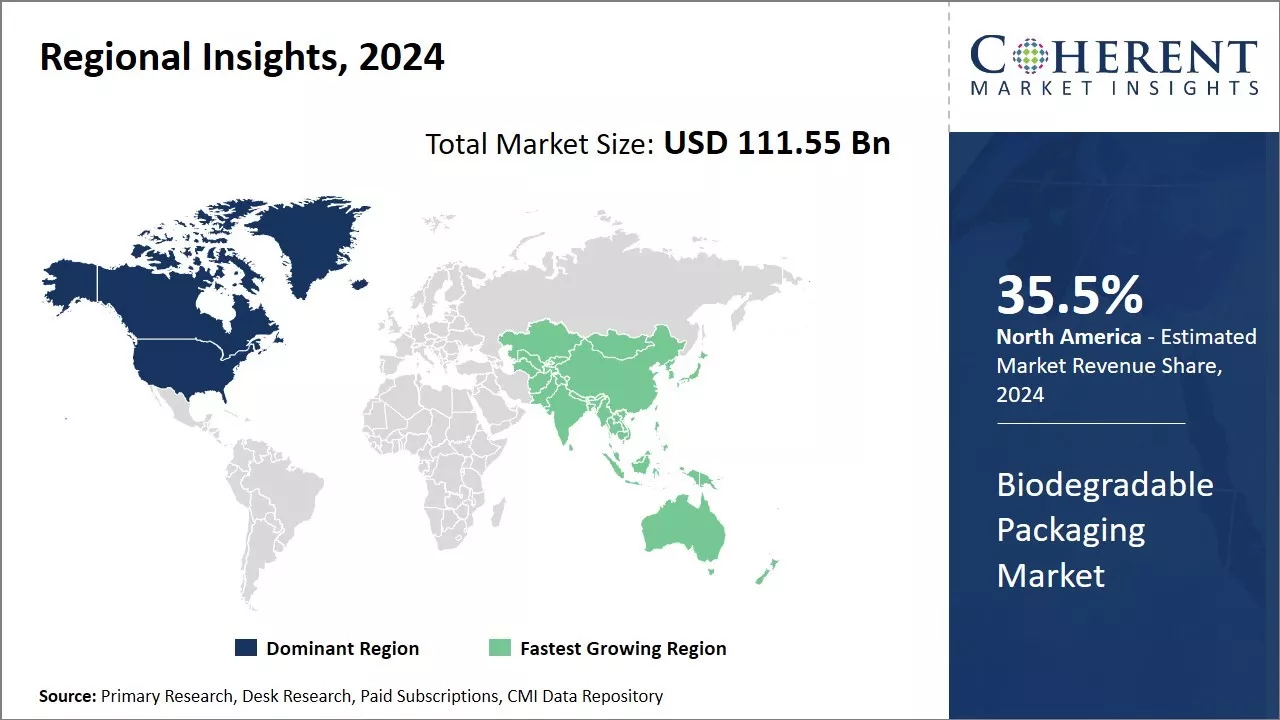
To learn more about this report, request a free sample copy
North America has emerged as the dominant region in the global biodegradable packaging market. The region accounts for over 35.5% of the worldwide market share as of 2024 mainly due to strong regulations. Both the U.S. and Canada have strict laws mandating the use of biodegradable materials for packaging certain products. Major food chains and retailers in the region have also committed to reducing plastic usage, transitioning to eco-friendly options. This creates consistent demand for biodegradable packaging from sectors such as food and beverages, pharmaceuticals, and personal care. The presence of leading bioplastics manufacturers in the region such as NatureWorks and BASF SE back the supply capability. Additionally, North America hosts the largest R&D centers for innovating novel biopolymer compositions and advanced recycling technologies. This helps brands upgrade to new types of biodegradable packaging materials. Major exporters also rely on the region for sustainably-sourced raw materials, giving a fillip to trade. Stable pricing across value chains has augmented the cost-effectiveness of biodegradable solutions in North America.
On the other hand, Asia Pacific is recognized as the fastest-growing market for biodegradable packaging. Countries like India and China account for over 60% of the global population and witness immense packaging waste generation annually. Stricter environmental protection acts in these nations are propelling brands to embrace biodegradable substitutes. Rapid urbanization and rising disposable incomes have expanded the consumer base as well. This stimulates packaging consumption across various end-use industries daily necessities to luxurious items. Asia Pacific also offers affordable biomass feedstock and labor for compounding bioplastics. Domestic manufacturers leverage this to mass-produce various biodegradable product lines at competitive prices. As environmental stewardship gains importance, export demand for biodegradable solutions from the region looks promising. Supportive government initiatives on sustainability and innovation further augur well for the Asia Pacific biodegradable packaging market to progress steadily in the future.
Biodegradable Packaging Market Report Coverage
| Report Coverage | Details | ||
|---|---|---|---|
| Base Year: | 2023 | Market Size in 2024: | US$ 111.55 Bn |
| Historical Data for: | 2019 To 2023 | Forecast Period: | 2024 To 2031 |
| Forecast Period 2024 to 2031 CAGR: | 6% | 2031 Value Projection: | US$ 167.52 Bn |
| Geographies covered: |
|
||
| Segments covered: |
|
||
| Companies covered: |
BASF SE, Smurfit Kappa Group, Mondi Group, Rocktenn, Stora Enso, Clearwater Paper Corporation, Amcor, Novamont S.P.A., Kruger Inc., Reynolds Group Holding Limited, International Corp., Solenis, DuPont, Ball Corp, Novamont, Tetra Pak International SA, Biopak PTY, Imex Packaging, and Elevate Packaging Inc |
||
| Growth Drivers: |
|
||
| Restraints & Challenges: |
|
||
*Definition: The biodegradable packaging market consists of companies that produce packaging materials and products that decompose and break down into natural elements like organic matter and biomass after disposal. This includes packaging made from grains, agricultural byproducts, bamboo, recycled paper, and plastics derived from renewable sources like corn or sugarcane that can break down in a compost environment. The goal of biodegradable packaging is to provide environment-friendly alternatives to traditional plastic packaging that does not decompose and creates pollution.
Frequently Asked Questions
Joining thousands of companies around the world committed to making the Excellent Business Solutions.
View All Our Clients